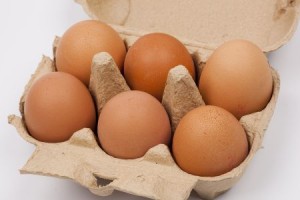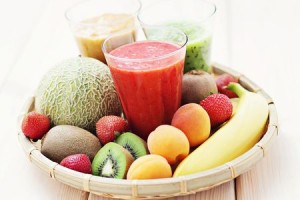Do you want to improve your health without spending a lot of time and energy? Sometimes a small change makes all the difference. Five simple actions can help you losing weight and narrow your waist while bettering your general state.
In order to eat healthier, you don’t necessarily have to turn your eating habits upside down or invest a lot more – or enjoy each bite any less. Sometimes all it takes are a few small changes that can make a huge difference to your health, improving your weight, waist, and blood tests.

So what are these nutritional changes that can be adopted without investing a lot of time and energy, and without breaking the bank?
- Got Oats?
Oat is one of the healthiest and most versatile foods in our diet. Many people only know it in the form of oatmeal or as granola rich in fruits and nuts. Another way to enjoy the healthy benefits of oat is to eat its nutritious fiber (known as “oat bran”), drink oat milk, and to incorporate flakes, bran, and milk into baked goods. Recently gaining in popularity are oat groats – whole, unprocessed grains that provide a meaty and mild-tasting (read: easily seasoned!) alternative to brown rice.Oat fiber is considered to be a soluble fiber that can bind cholesterol in our digestive system and thus help its removal from the body. After a few months of regularly using oat bran, you may very well notice an improvement in your blood cholesterol values.
How Do I Do It?
The easiest way is to add a teaspoon of oat bran to your food twice a day. You can add it to yogurt, salad, hot cereals, baked goods, stews, stir-fries, burgers, and more – its mild taste and properties make it very user-friendly. - Change to Whole Grain Flour
The grains we eat can be a very important source for vitamins, minerals and nutritious fibers, but in order to enjoy all that wealth you need to make sure you consume the grains in their wholesome form, meaning, with the shell on!How Do I Do It?
Before you cut the bread out of your diet or completely abstain from pasta, try substituting refined white flour products with whole grain products. This means preferring brown rice over white rice, eating whole grain pasta, and enjoying whole grain cookies and snacks. And don’t be limited by wheat! The whole grain market is flourishing, with products based on quinoa, spelt, brown rice, and more.While the texture of some of these may be new to you, after a few days, you’ll get used to used to it. If it is too challenging, make the change gradually by combining familiar products with whole grain products and increasing the proportion of whole grains. Soon enough you’ll discover that you’re eating less, feeling fuller, and have better functioning bowels. To get the best results, make sure you drink more water at every fiber-rich meal, and throughout the day.
- Think Before You Drink
When it comes to drinking, the most important thing to do is to give up on sugar-sweetened and diet beverages, and choosing water instead. It’s true, you have to get used to getting along without the sweetness or with a different flavor, but again, you will get used to it, and eventually love the cleaner feeling.Drinking more each day takes some practice, and while it does entail running to the bathroom more often, after 5-6 days the body understands you mean business and you will get used to it.
It goes without saying that alcoholic beverages need to be limited – not just because many are rich in mostly “empty” (non-nutritional) calories, but also because they can be harmful to the body’s metabolism and impair weight maintenance efforts.
How Do I Do It?
Start the day with two glasses of water, even before your morning coffee. Try to drink at least 1 liter of water by lunch time, and at least 2 more glasses before the late afternoon. That way you’ll get to dinner after drinking at least 1.5 or 2 liters of water, you’ll be less hungry and more alert and vital. If you’re used to drinking 3-4 glasses of juice during the day, the number of calories you consume will significantly drop.The healthiest alternatives to sugar-sweetened beverages include not only water, but also herbal and antioxidant-rich teas (such as green, white, and red), or soda water flavored with citrus juice, with or without a natural noncaloric sweetener. If you are exerting yourself in intense exercise and/or heat, low-sugar (less than 8%) electrolyte-rich beverages may play a supportive role, but be sure to avoid any with caffeine or artificial ingredients (including high-fructose corn syrup) or colors (i.e. LIV Organic). An alternative to sports drinks is to supplement water with sources of electrolytes, such as bananas, raisins, and even a chewable calcium-magnesium supplement or low-sodium salt substitute.
Flavored soda water can also be an alternative to alcoholic cocktails. As alcoholic beverages go, antioxidant-rich red wine remains the gold standard of choice, but moderation (I.e. 3-4 fluid ounces a few times per week at most) remains essential.
- Cut Back on Fat
This may not come as a surprise, but high fat percentages are not recommended for your health or your diet. Though there’s always a dilemma to how low should you go, the general consensus is that a preventive diet should provide no more than 30% of calories from fat, and for individuals at special health risk, 20-25% of total daily calorie intake.How Do I Do It?
Choose reduced-fat, low-fat, and eventually fat-free dairy products – do make sure the milk is fortified with key nutrients (i.e. vitamins A and D), and that the fat is not swapped out for even less desirable ingredients, such as “milk solids,” which are highly-processed, and/or carrageenan – which is “natural” but linked to inflammatory reactions. Try having meat-free days: start with at least once a week substituting with legumes and/or wheat-based alternatives, and add days to your week – and your life. When eating meat, make sure you choose the leanest cuts and trim the white; remove the skin from poultry. When seasoning, take advantages of herbs and spices, lemon juice, vinegars, mustards, and other fat-free options. For fat-based seasonings, sauces, and spreads, gradually cut back on the amount of fat added – and of course, swap out animal-based and “bad” oils for “good” ones such as olive, flax, organic canola, hazelnut, almond, macadamia, chia, or avocado. - Stop Frying
If we’re discussing fat percentages, one of the major recommendations is to avoid frying and switch to cooking or baking, methods that don’t require high amounts of oil. Moreover, frying is risky not just because of the amount of fat, but also the chance of accumulating trans-fats, which have been linked to disease.How Do I Do It?
For every fried recipe there is a non-fried recipe. For example, instead of French fries, you can bake julienned potatoes sprayed with a light coating of olive oil. Burgers can be baked or grilled in the oven, as can chicken and vegan fillets with whole grain crispy coatings, not to mention seasoned fresh vegetables such as cauliflower. Oven-baking is preferable to traditional grilling, as it does not cause unhealthy charring.
Now that we have thought about everything – no more excuses!




Answers to some questions:
1. Steel-cut oats are oats that are non-instant, and are relatively unprocessed. They are often recommended in addition or instead of oat bran because these include other factors that contribute to its nutritional value. They and other foods recommended in this program are available at health-oriented stores.
2. The best flaxseed is the freshest and/or that stored in refrigeration to preserve the fragile omega-3 fatty acids.
3. Grilling a way that does not char (such as using a metal sheet on the grill or the waffle iron type made famous by George Forman Sr.) are fine, especially since they drain away some of the fat.
4. Water requirements depend on primarily on weight (minimum 24 ml per kg or 0.4 fl oz per lb), as well as age (infants and the elderly), temperature, and activity, all of which involve excess fluid losses through the skin. Some diseases require fluid restriction, but this is information you would receive from your health care provider.
5. Lemon is an excellent addition to water, as well as to tea (it especially increases the benefits of green tea).
6. If you use 2% milk and do not have a medical condition, there is no need to switch to skim.
7. Regarding Ensure Clear: first, there may not be a need with this program, since it is already high-protein. Second, the product contains a lot of sugar, with total carbs equaling those in 3 slices of bread.
8. Fruit juice not from concentrate also tends to be very high in sugar, and may have other undesirable features, due to the need to preserve it. It is best to make your own fresh-squeezed. Sugar-free juices often contain artificial sweeteners, and so are not generally recommended on this program.
9. Regarding coconut oil, you can see our summary here https://www.trimdownclub.com/the-coconut-craze/. For information on other oils, including those that are OK for cooking, see here https://www.trimdownclub.com/all-about-oil/. Note that deep-fat frying is not recommended.
10. The grocery list function of the Menu Planner application can be accessed in the tool bar located to the right of the daily menus.
11. The five foods to avoid are regular margarines, artificial sweeteners, preserved orange juice, conventional soy, and regular “whole” wheat bread. It is instead recommended to choose good oils as discussed in the two articles linked in response #9 above, butter, or newer “smart” margarines based on olive or flaxseed oils that are trans-fat-free..
Hi, EileenSymth. Those products are available in health-oriented stores, including large chains such as Whole Foods Market (http://www.wholefoodsmarket.com/stores/list/canada); they are also available online, including through Amazon.
In the Caribbean we enjoy eating lots of fried foods. My future goal is to cut down on fried foods and start eating healthy. Thank you for sharing this information. As a diabetic I plan to start April 11, 2013.
I fry some foods using a non stick fry pan so I’m not adding any oil at all! Some foods just tastr better fried.
I find that many ingredients are hard to find. I believe this is a US business so places where to buy ingredients are hard for me. I do hope dietician,s answer our questions as opposed to us who have joined the forum, even though some of u have good answers.
I have started to eat steel cut oats and the fibre is supposed to be greater than regular oats. Also, which form of flaxseed is best to buy?
I am always to get started on losing the weight, I have even been succesful with losing the weight but I always put it back on that has been depressing.
Great suggestions! I especially liked the one about dividing your weight in half and drinking that number of ounces. I like oatmeal for breakfast but had no idea oats were good for cholesterol. You mean all oats? not just bran?
Good morning! My name is Julie. I use to be a Safety Manager with the Army and worked with a battalion of young enlisted men and women and we would always tell them to let their urine be their guide on the amount of water they drink. The darker the urine the more water you need. Don’t let your level of thirst be your only guide.
I understand that cold presses coconut oil is suppose to be very healthy and helps reduce abdominal fat. Is there any truth to this
A friend told me that a nutritionist told her to divide her weight (in pounds) by 2 and use that number as ounces of fluid/day to consume. At the time my weight indicated a need for 12 glasses of fluid a day. It was hard to make that, as I have virtually no thirst. (Even while working in Saudi Arabia I never got thristy, and it was REALLY dry there). Since achieving the goal, though, I find weight loss has again improved after stalling out for a while.
Hello, my name is Annette, I am a new member to The Trim Down Club. This article is was extremely informative and encouraging to me. Some things I knew, but, WOW!, so much I was unaware of. I am being introduced to quite a few new products that are healthier for me and I am excited to find them and make them part of my daily meals. I am 63 years of age and thank God, I have no major illnesses or diseases. I do need to lose some lbs and I stay active. I walk every morining before breakfast 2 miles in 30 minutes, give or take a few minues (lol). My goal is to walk 3 miles in 30 minutes. My husband has diabetes and with the Trim Down Club I can make healthy meals for the both of us. Believe it or not, my husband was diagnosed with diabetes two years ago and his sugar level was over 900 points, he was going into a diabetic coma, we got him to the er just in time. Well, to make a long story short, within six months of his being released from the hospital we starting researching anything we could find anyone we could talk with. We found someone who told us he could contol his diabetes and stay off insulin by changing his eating habits and foods. Well, it’s been one year and 1/2 and he is insulin free! Yes, our eating habits are very important and I am sold on it…….He found your web-site and I am very happy he did………Thanks to all the dietician that make up the Trim Down Club…..
I have incorporated Ensure Clear into my diet, 1-2 times a day to boost my protein intake. Is this a bad idea?
I believe water with lemon would be fine. No calories in either.
Thanks for the info, especially about how to drink more water. I know I don’t drink enough, so I’ll try your suggestions for sure!
I sometimes substitute hot water with a squeeze of lemon for tea…would that count? OR would it be better to drink just plain water?
Whole grain crispy coating? Need to know more about that as well as whole grains in general. Shop at the Shop Rite. Specifically – need list of items that are easy to find that are whole grains…. I eat Special K cereal – good right?
Bread – specifically what bread to buy? The bread that starts with an S – not sure – forgot the name – where is that hiding on the shelf? Also – do I try and download every email? Not that great with computer stuff….
Drink 2% milk – no good? Need skim milk?
Use alot of coffee mate – non fat – drink alot of coffee….OK?
Need to cut out the cranberry juic – use Langers Zero – no good?
What are the Five foods you should not eat?
I knwo fruit juice is full of sugar, but what about fruit juice that is not from concentrate?
poppyann
Can a health grill be used, it drains off fat into a drip tray
There are some foods that need to be fried, can rice oil be a healthier alternative when frying?
Excellent information– all very helpful for me.
I see that I will have to work hard on the “no meat day”. I guess that will be one of my goals for the week.
Where do I find the grocery lists for the various weekly menus?
I would like to know about the grocery list as well (as 1st requested by lorimoore09 below)
Interesting to know about the OATS and Cholesterol binding. THANKS !
I am so surprised that grilling is a no no? We have ALWAYS been led to believe it is a preferred way to cook??? Is there a way to BBQ that would be considered ok…I’m not sure hubby can give up his only cooking job!
This is enlightening – thank you
I would like to know if there is a way to print out a grocery list for the week of menus??
Thanks Lori
We also can use steamable veggies they are really good when seasoned right,